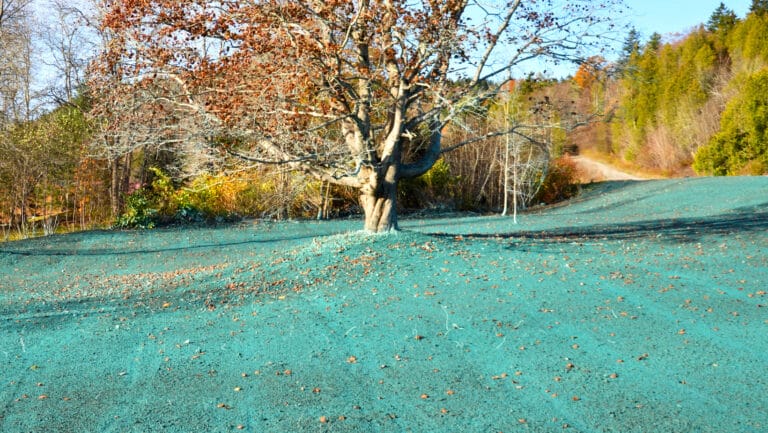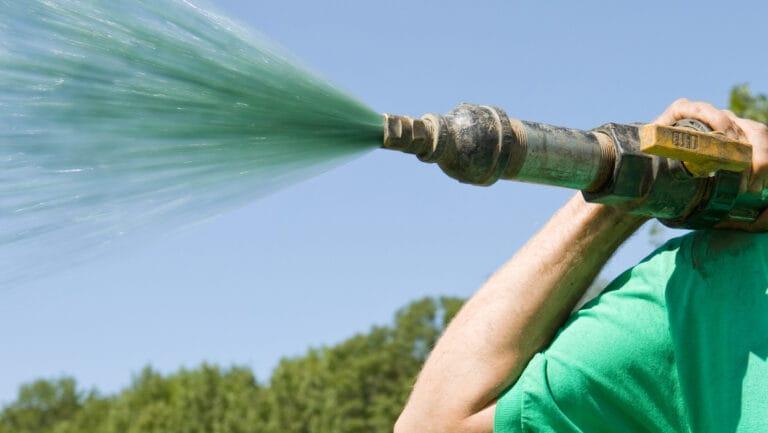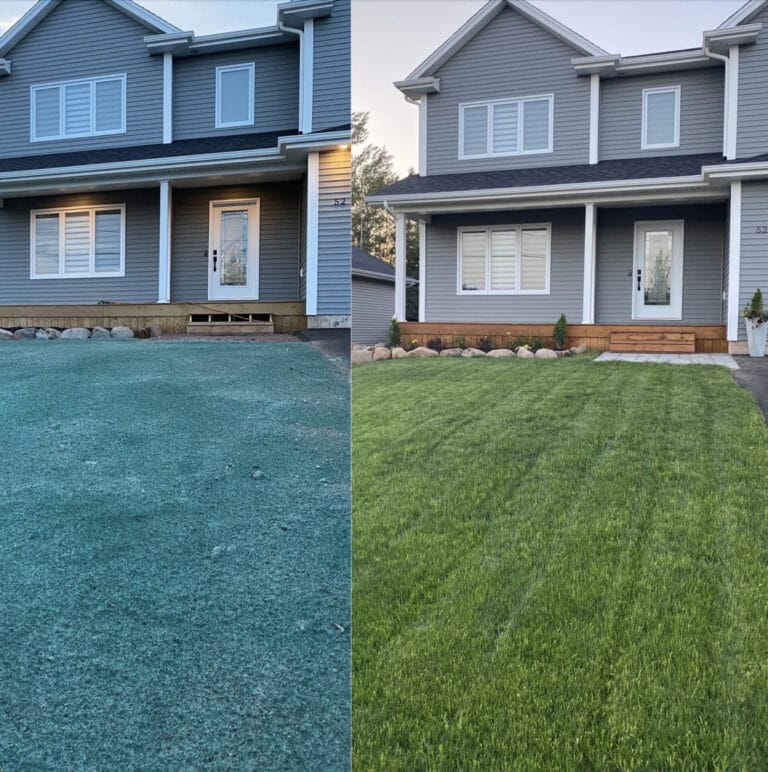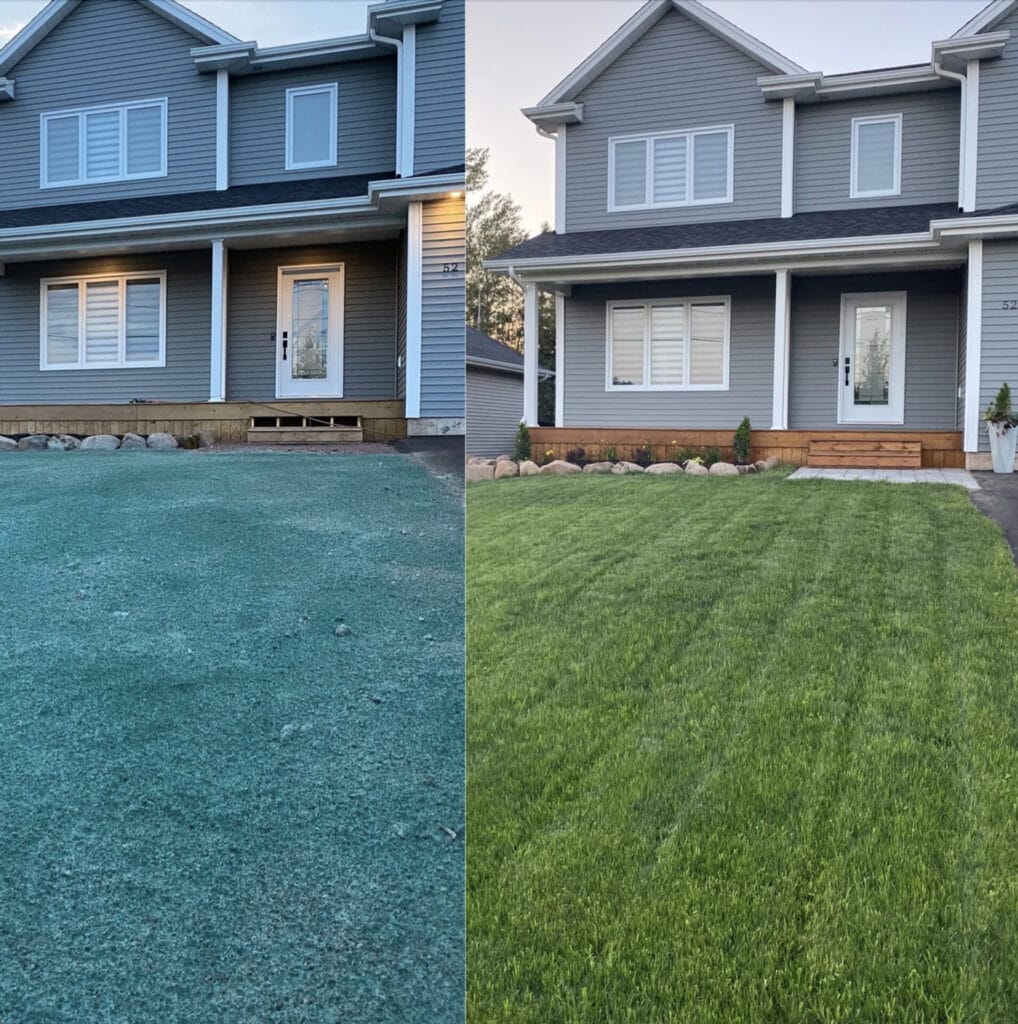In the realm of landscaping and environmental conservation, hydroseeding stands out as a revolutionary technique. From barren patches to expansive lawns, hydroseeding offers a green solution for achieving vibrant, healthy landscapes. In this blog, we’ll delve into what hydroseeding entails, its benefits, and why it’s becoming increasingly popular in the realm of landscaping.

What is Hydroseeding?
Hydroseeding, also known as hydraulic mulch seeding or hydro-mulching, is a method used to seed grass, flowers, trees, and other vegetation by spraying a mixture of seed, water, fertilizer, and fiber mulch onto the desired area. This mixture, often called a slurry, is applied evenly and efficiently using specialized equipment, resulting in rapid germination and establishment of vegetation.
The Hydroseeding Process
The hydroseeding process begins with site preparation, which may involve grading and clearing debris to create a smooth, uniform surface. Once the site is ready, the hydroseeding mixture is prepared according to the specific requirements of the project, taking into account factors such as soil type, climate, and desired vegetation.
Next, the hydroseeding equipment is used to spray the slurry onto the designated area. The application process ensures even coverage and optimal seed-to-soil contact, promoting successful germination and growth. Depending on the project scope and environmental conditions, multiple applications may be necessary to achieve the desired results.

Step by Step Process:
- Site Preparation: Before hydroseeding, the area to be seeded must be properly prepared. This may involve clearing away debris, leveling the ground, and addressing any soil compaction issues.
- Seed Selection: The choice of seeds depends on various factors such as climate, soil type, and intended use of the land. Hydroseeding can accommodate a wide range of seed varieties, including grasses, wildflowers, and erosion-control species.
- Mixing the Hydroseed: The hydroseed mixture is prepared by blending seeds, mulch (often made from wood fibers or cellulose), fertilizer, and water in precise proportions. Some formulations may also include additives to enhance moisture retention or promote faster germination.
- Application: The hydroseed mixture is sprayed onto the prepared soil surface using a hydroseeding machine. The equipment evenly distributes the slurry, ensuring thorough coverage and optimal seed-to-soil contact.
- Germination and Growth: With proper watering and care, the seeds germinate and begin to establish roots within the nutrient-rich mulch layer. Depending on environmental conditions and seed types, visible vegetation can emerge within a few weeks to a couple of months.
Benefits of Hydroseeding
Cost-Effectiveness: Hydroseeding is often more cost-effective than traditional seeding methods, particularly for large areas. The efficiency of the application process reduces labor and material costs while providing superior results.
Erosion Control: The fiber mulch in the hydroseeding mixture helps prevent soil erosion by creating a protective layer over the seeded area. This is especially beneficial for slopes, embankments, and areas prone to erosion.
Rapid Germination: Hydroseeding promotes rapid germination and establishment of vegetation, leading to quicker results compared to traditional seeding methods. This is particularly advantageous for landscaping projects that require fast, reliable growth.
Customization: Hydroseeding allows for customization of the seed mixture to suit specific project requirements, including soil conditions, climate, and desired aesthetics. This flexibility ensures optimal results and long-term sustainability.
Environmental Friendliness: Hydroseeding promotes environmental conservation by using biodegradable materials and minimizing soil disturbance. The method reduces water usage and chemical runoff, contributing to a healthier ecosystem.

Applications of Hydroseeding:
- Residential Lawns: Hydroseeding offers homeowners an efficient way to establish lush, green lawns with minimal hassle.
- Commercial Landscaping: From parks and golf courses to roadside revegetation projects, hydroseeding is widely used in commercial landscaping applications.
- Erosion Control: Hydroseeding plays a crucial role in stabilizing slopes, controlling runoff, and preventing soil erosion on construction sites, highways, and land reclamation projects.
- Habitat Restoration: Hydroseeding is employed in habitat restoration efforts to reintroduce native vegetation and enhance biodiversity in degraded ecosystems.
Tips for Successful Hydroseeding:
- Choose the Right Seeds: Select seed varieties that are well-suited to your climate and soil conditions for optimal results.
- Proper Maintenance: Adequate watering, fertilization, and weed control are essential for nurturing healthy vegetation post-hydroseeding.
- Timing Matters: Plan hydroseeding projects during the optimal growing season for the chosen seed species to maximize success.
- Professional Assistance: Consider hiring experienced hydroseeding professionals for large-scale projects or challenging terrain.
Hydroseeding offers a sustainable, cost-effective solution for achieving lush, healthy landscapes in a variety of settings. From residential lawns to commercial developments and environmental restoration projects, hydroseeding delivers rapid results with minimal environmental impact. By understanding the hydroseeding process and its benefits, individuals and organizations can make informed decisions to enhance their outdoor spaces while promoting environmental stewardship. Embrace the green revolution with hydroseeding and transform your landscape into a thriving oasis of natural beauty.

